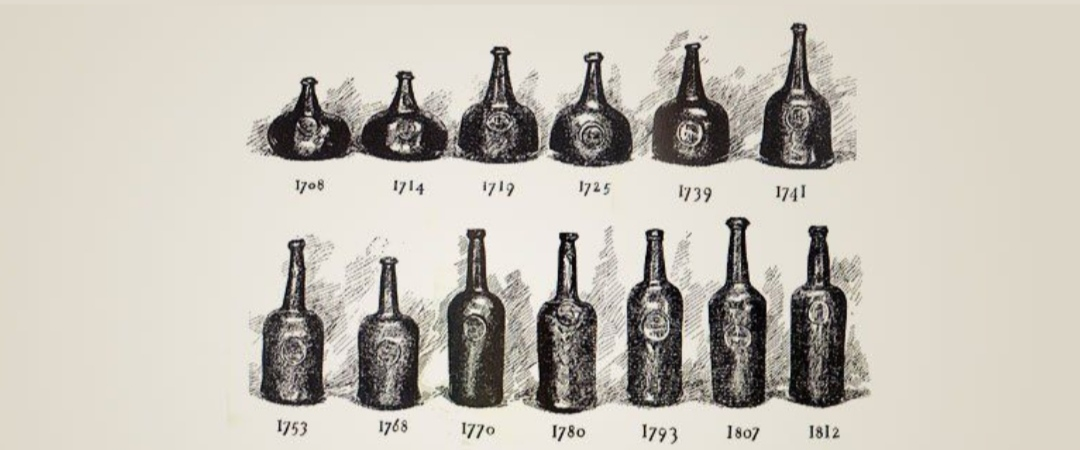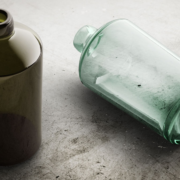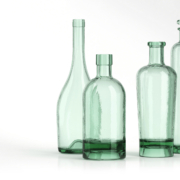The A–Z of Wine Glass Bottle Packaging
One crucial step in winemaking is the process of selecting an appropriate glass bottle. Why? Because a wine’s identity is greatly influenced by its glass bottle.
Often, the content of the bottle takes center stage in conversations and articles rather than the bottle itself. However, our attention today will be on elevating your wine packaging, specifically how wine bottles are packaged for distribution.
In the last few years, wine packaging has experienced a radical shift. The invention of cans, tetra packs, and other packaging materials and innovations have changed the way producers think about wine packaging.
However, glass bottles remain the traditional and preferred method for wine packaging. A typical wine bottle is made of glass and is available in a variety of sizes and forms. However, most wines are commonly packaged in 750 mL glass bottles.
Glass bottles have been used for hundreds of years for wine packaging and have proven to be quite beneficial. However, this has not always been so, as before this time, other materials were used for wine packaging.
The History of Wine Storage and the Transition to Glass Bottle Packaging
According to records of the time, the most prevalent means of holding and transporting wine were wineskins. Most of the evidence for the use of wineskins comes from Ancient Greece (12th-9th century BC) and from the New Testament in the Bible. According to these sources, wine was transferred straight from the fermentation into an old wineskin to be taken home. Preferred by travelers for its lightness, its popularity, and the portability it brings to wine consumption, is undeniable.
Larger quantities of wine, on the other hand, required more permanent storage with temperature control, which was critical to preserving the wine’s flavor. Thus, earthenware pottery was utilized to ferment, store, and transport wine.
These large earthenware jars were used above ground to transport large volumes of wine, but they were also partially buried underground to control temperature and preserve the product without the presence of electricity.
The Kvevri – Wine Packaging Using Clay
A Qvevri is a large, beeswax-coated earthenware vessel, used by ancient Georgians as early as 6,000 BC. They were used in every stage of wine production, from grape crushing to aging. The qvevris could hold thousands of liters of liquid, depending on their size.
They were filled with unfermented grapes from the area. The qvevri is subsequently buried, the grapes are crushed, stems and all, and primary fermentation begins. Then it is sealed with a large stone to form an airtight seal.
The qvevri is then left for up to two years, enabling the wine to experience malolactic fermentation and maturation. The result is an extremely tannic, earthenware-aged wine.
The Amphora – The Standard in Clay Vessels For Packaging Wine
Amphorae, wax-lined (pine and beeswax) pottery vessels, were made by the Egyptians and were gradually adopted by nearly all wine-drinking and wine-producing civilizations in the Mediterranean and Mesopotamia, including Ancient Greece and Rome, where they were most prevalent and widely used. They were easy to produce and, more importantly, transport. Their circular design, with tapering bottom, two handles, and a long, slender neck, fulfilled four functions:
● The surface area of wine exposed to oxygen was reduced by the slender neck.
● The tapered bottom promoted the accumulation of sediment and allowed the amphora to be buried with more ease when long-term storage was required.
● They were able to load numerous into ships
● The handles made carrying them easier
When you look at an amphora, you can find parallels between it and current wine bottles, from the long neck that protects the wine from air, to the sediment that collects on the bottom of bottles. Some societies adorned their vessels ornately, while others were strictly functional, leaving them ‘clean-skinned.’
For a long time, it was considered that amphorae were the primary means of transporting wine across considerable distances throughout the Roman Empire. Recent discoveries of shipwrecks in the Mediterranean have revealed that wine was frequently transported in a bigger container known as a dolium.
The Greeks termed these large clay jars pithoi, while the Romans called them dolium. In order to make their containers airtight and watertight, the Romans used heated resin known as “pitch” to line the dolia and plaster to patch them where needed.
The Shift To Oak Barrels For Storing and Transporting Wine
The Roman Empire conquered numerous cultures, embracing technologies such as the wooden barrel. While the Romans were aware that other cultures used palm wood barrels to transport wine, amphorae (and dolia) were the preferred mode of transport at the time.
The military and merchants swiftly replaced amphorae with wooden barrels. Wooden barrels were stronger than clay barrels, weighed significantly less, and could be rolled on their side.
Moreover, there were plenty of trees in Europe, and unlike palm trees, woods like fir and oak bent very easily, so the stave production for barrels was easier. The adoption of barrels was quick; by the third century AD, the transition to storing and transporting wine in wooden barrels was nearly complete, thereby ending clay’s 5,500-year reign.
The wood, on the other hand, did not provide an airtight seal, and the wine spoiled quickly in the wooden casks. Winemakers were not properly bunging or topping off their barrels since they didn’t understand why the wine was spoiling, and people simply proceeded to consume increasingly younger wines.
The Introduction of Glass Bottle Packaging For Wine
After centuries of dominance by the wooden cask and the resulting need to drink wines quickly before they turned to vinegar, the search began for an alternate vessel. Although the bottle had already existed, it was used primarily as a midpoint to get the wine from the barrel to the cup. Corks were not well-fitted as they were simply meant to keep bugs and dust out, not to create an airtight seal.
Henry Purefoy discovered that when the cork was not submerged in liquid, it shrank due to dryness and spoiled the wine. When the bottle was laid on its side and the cork submerged in the wine, it preserved the wine with a capability similar to that of an amphora. From a short, stout bottle in the 1740s to an elongated bottle like we have today, the shape gradually became more cylindrical to facilitate easy disposal.

In today’s world, bottles are recognized as the most preferred method of wine packaging. Why? because the rate of chemical interaction with glass is zero. Wine bottled in glass gets to retain its strength, aroma, flavor, and quality as a whole.
Glass bottles are not associated with any negative impact on health, which makes them a safer option. Additionally, they improve the overall drinking experience and add aesthetic appeal.
Wine Bottle Designs
Although there isn’t a set rule linked to wine bottle shapes, a few trends throughout history suggest there might be a connection between a wine bottle shape and the type and location of the grape used.
For instance, Chardonnay and Pinot Noir wines tend to come in short, classic, or fat, Burgundy-shaped bottles. Other wine producers in Portugal, Italy, Spain, and Germany tend to follow the tradition of their local areas by choosing bottle shapes most appropriate for their wines.
Additionally, the wine manufacturers want to make their product packaging as distinctive as possible, which explains why you will find one bottle that is tall and skinny, while another is short and squat. Sometimes these alterations, including to the punt, are done to allow the manufacturer to use more or less glass as needed, and to adjust bottle profile and heights to accommodate label design, shipping requirement, and budget.
For example, Chardonnays are bottled in slope-shouldered Burgundies while Cabernets are packaged in squarer-shouldered Bordeaux bottles. Generally, bottles with thick walls and a wide-pronounced punt with a sloping shoulder are associated with sparkling wines and Champagne. High-shouldered bottles with pronounced punts are used for Port, Sherry, and Bordeaux varieties. These bottles come with a bulbous neck, which serves the purpose of collecting residue.
Certain types of wines, like Burgundy and Rhône varieties, are packaged in tall bottles with sloping shoulders and a smaller punt. With the wine market being quite vast in size, it isn’t a surprise to find new wineries adopting similar bottling styles.
Preparing Glass Bottles for Wine Packaging
There are several processes involved in the bottling of wine. The first step is preparing the bottles. Wine bottles can be new or recycled. Cleaning is important regardless of the type, which is why de-labelling and cleaning can often be accomplished by soaking bottles in a washing solution.
Additionally, clear glass bottles are not recommended for wine packaging due to exposure to sunlight. Direct sunlight can discolor the content of the bottle, which is why, unless you are certain that the bottle will not come into direct contact with sunlight, it is best to go for a colored bottle for wines that are meant to be stored for longer periods of time.
Oxygen can dissolve into the wine during the bottling process, which is why one of the goals when filling is to prevent oxidation. This could affect the wine composition, shelf life, and consumer acceptance, which is why the wine bottling process is conducted to promote the dissolution of oxygen in the wines.
It is best to cork the bottle immediately after filling it and give it a final water rinse on the outside to remove any drops of wine. After filling, the wine bottles are left upright for three to five days, as this allows the pressure inside to equalize back to normal. Once these days elapse, the bottles are then stored on their sides or upside down in the coolness of a cellar.
Quality Glass Bottle Packaging For Wine
Due to the importance of bottles in the wine industry, without a doubt, glass wine bottles will not be replaced in a very long time. This is because glass represents a premium image for wine—for instance, Champagne bottles. Utilizing glass for your beer, wine, or spirits will result in a more aesthetically pleasing experience for the consumer, and increase brand awareness.
Instead of being replaced, this packaging material will evolve with time, offering wine manufacturers several more creative opportunities.
Just like the content inside, the packaging and appearance of a wine bottle play an important role in a consumer’s drinking experience, which is why Global Package comes to mind when it comes to getting some of the best glass wine bottles, designed to give your brand a distinctive look. When it comes to wine bottles, there are no set rules; you are allowed to be as creative as you choose, as long as the results suit your brand’s needs.








